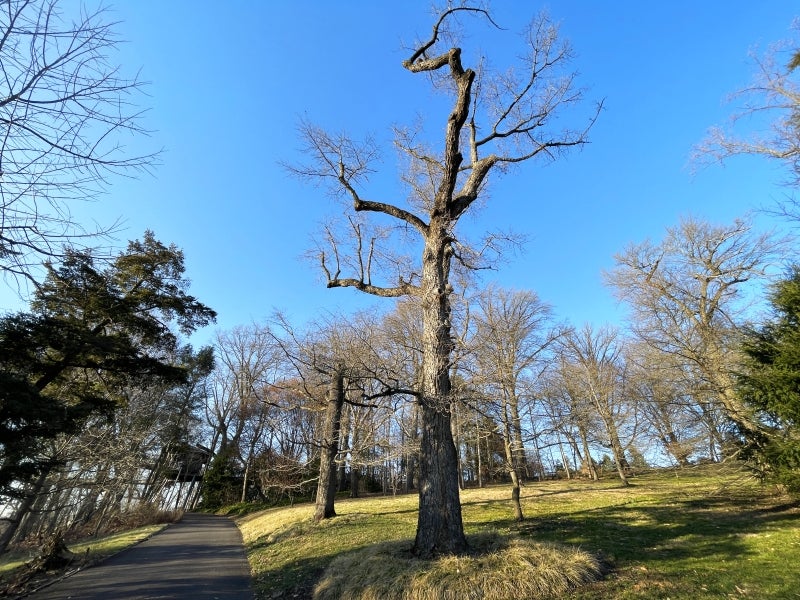Blog


“What is the oldest tree at the Morris Arboretum & Gardens?”
That’s a frequently asked question here at the Morris, and it is not easy to answer.
The best way to tell the age of a tree is to count growth rings. One ring equals one year of growth. The problem is you can only see growth rings on trees that have been cut down. Felling a tree to count growth rings is generally a counterproductive endeavor. The next best way to determine age is to drill into the trunk and pull out a core of wood to count rings.
John Morris was a fastidious recordkeeper. So much so that in 1909 he contracted with Pugh & Hubbard, a Philadelphia civil engineering firm, to survey every element of his estate garden, including all trees, shrubs, curb edges, and individual stones in the Japanese gardens. This information was recorded on a series of grid maps. They were then bound into a compendium titled The Atlas of Compton. We use this original survey as the basis for our entire plant records system. Unfortunately, the Atlas does not indicate planting dates. The Atlas is a snapshot of what was in the garden in 1909. Determining when some of the earliest specimens at the Morris were planted requires a bit of sleuthing. We can use John’s financial ledgers and other notes to determine when some specimens were purchased and that gets us closer to knowing the age of some of the trees planted by the Morrises.

GOOD CANDIDATE
A number of trees pre-date the Morris estate. One notable tree is the large chestnut oak (Quercus montana) that stands in the middle of the Out on a Limb boardwalk. We cored this tree prior to the construction of Out on a Limb to determine its suitability for building a walkway around it. Using this coring, we estimate this tree first sprang to life in 1755, making it about 268 years old.
Downslope, closer to the Rose Garden, sits a ragtag collection of black tupelo trees (Nyssa sylvatica). Black tupelo trees have a unique niche in the local ecology. They are not pioneer trees, nor are they late succession trees. Instead, they relish their role as subordinate, middle canopy trees. They are generally deeply rooted, thus making them somewhat of a challenge to move. Black gums have a slow growth rate but tolerate an amazingly wide ecological range from wet to dry, sun to shade. As the longest-lived hardwood species in the eastern U.S., there are reported examples of these Methuselahs reaching over 600 years old.
Our trees are among the largest in the state, with one specimen reaching 125 feet with a 10-foot circumference. Several of these trees show up on the 1909 Atlas as large trees, making them good candidates for the oldest tree designation.
NOTORIOUS ROOT SUCKERS
Most hardwood trees are ring-porous growers. They produce relatively large cells at the beginning of the season, and successively smaller cells as the season wears on, creating growth rings. Black tupelo trees, however, are diffuse porous growers, producing cells in the trunk that are relatively the same diameter all season long. Counting growth rings on these trees requires a core that is sanded smooth and studied under a microscope. Using this method, we determined that several of our oldest black tupelos are at least 230 years old. However, this still doesn’t give us the age of this organism.
Black tupelo trees are notorious for producing root suckers as they age. An old tree dying off will send up a new shoot several feet away from the truck. These new sprouts grow and fill the void left by the parent plant. In this sense, a trunk may only live for several hundred years, but the organism may live for eons.
We can’t say for certain if the black tupelo trees on the hillside beside the Rose Garden are ancient organisms or not, but this research indicates that they are likely the Morris’s oldest plants.
This article originally appeared in Seasons Spring/Summer 2023.